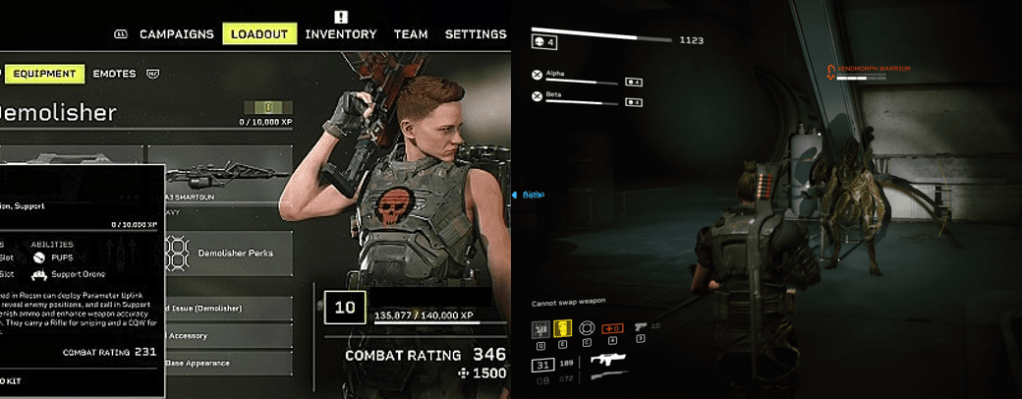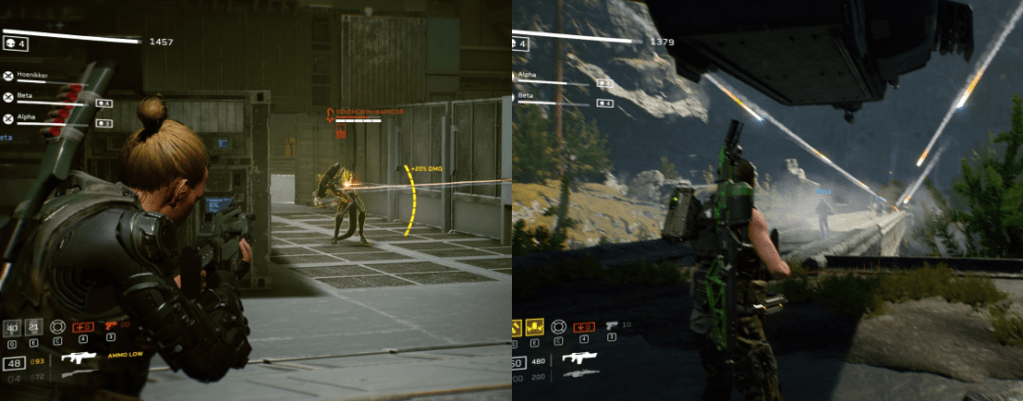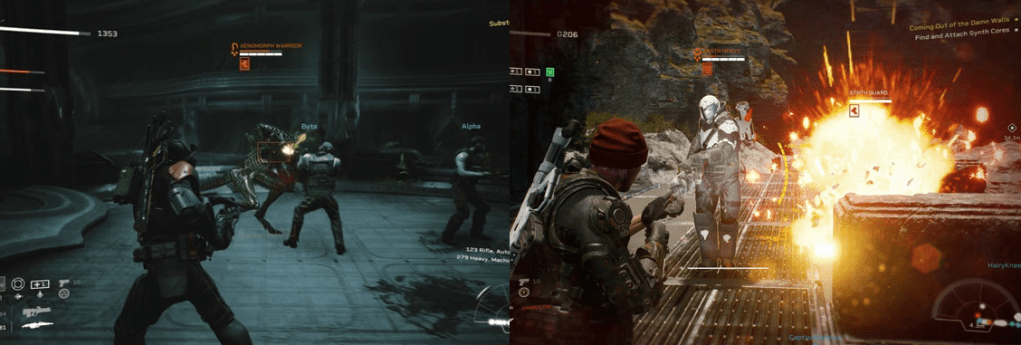Audiences were first introduced to the horrific, biomechanical Xenomorphs in the classic science-fiction horror film Alien (Scott, 1979), in which an unsuspecting cargo crew investigates a beacon on the barren world of LV-426. Thus, the 26th of April is widely celebrated as “Alien Day”, a day to celebrate one of the greatest sci-fi/horror franchises ever created.
Released: 2 December 2003
Originally Released: 22 May 1992
Director: David Fincher
Distributor: 20th Century Fox
Budget: $50 to 60 million
Stars: Sigourney Weaver, Tom Woodruff Jr., Charles S. Dutton, Charles Dance, Ralph Brown, Danny Webb, and Lance Henriksen
The Plot:
After facing her fears and escaping a planet full of hostile aliens, Lieutenant Ellen Ripley (Weaver) finds herself marooned on Fiorina “Fury” 161, a prison colony inhabited solely by violent male inmates who have found God. Ripley’s heartbreak at the loss of her adopted family soon turns to a desperate battle of survival when a bipedal Xenomorph (Woodruff Jr.) forces Ripley into a final confrontation.
The Background:
In 1979, Dan O’Bannon and Ronald Shusett’s “Jaws (Spielberg, 1975) in space” concept was given life by director John Carpenter as Alien, an unexpected commercial success that is now widely regarded as one of the greatest movies of all time. Although the film was a financial success, it took seven years for a sequel to emerge; helmed by James Cameron, Aliens (ibid, 1986) weathered a troubled shoot to become an even greater critical and commercial success and perhaps the most influential entry in the franchise. Naturally, the studio was eager to capitalise with a third film but the franchise producers were so eager to avoid being repetitive that Alien³ became one of the most troubled productions in cinema history. They were so eager that the studio released a misleading teaser that implied Alien³ would be set on Earth, despite being unable to settle on a script; ideas involved another action-orientated adventure and a planet made entirely of wood and home to a group of monks. Star Sigourney Weaver also had her own ideas about the direction and execution of the film, which was eventually helmed by up-and-coming director David Fincher, who came onboard without a script and had his vision continuously undermined by the studio. Since Stan Winston wasn’t available, the film’s visual effects were handled by Tom Woodruff Jr.’s Amalgamated Dynamics; per Fincher’s instructions, the Xenomorph was redesigned into a bipedal creature brought to life using a traditional suit and a rod puppet that was optically composited into the film. Considering how chaotic production was, it’s amazing that Alien³ performed as well as it did; it made just shy of $170 million at the box office but was met with mixed reviews. Many franchise names, and even the director, disowned the film, though this Assembly Cut has been regarded more favourably and it has since gained a cult following. Despite her best attempts, Alien³ wouldn’t be the end for Weaver or the franchise; sequels and spin-offs inevitably followed and Alien³ was also accompanied by a few videogame tie-ins and later dramatically re-envisioned in a comic book series that explored the unproduced screenplay ideas.
The Review:
It was certainly a tough task to follow-up the claustrophobic, atmospheric horror of Alien; switching things up into an action-oriented approach was a fantastic idea, and Aliens was still able to retain the same gritty, gory horror while delivering a surprisingly cathartic experience for the unlucky Ripley. As if waking up to find that she’s missed out on fifty-seven years of her life wasn’t bad enough, Ripley also awoke to find that her daughter had died in the interim and the desolate planet LV-426 had been terraformed into the perfect breeding ground for the nightmarish Xenomorphs. It’s often difficult for me to pick a favourite between Alien and Aliens, though I tend to favour the latter as I find I can just put Aliens on anytime and be easily satisfied whereas I think Alien demands a little more of your attention. I can certainly understand the divisive nature of Alien³; in many ways, the franchise could’ve comfortably ended at Aliens for some time, or spun off to include a different set of characters, and I remember not really being the biggest fan of the third entry when I was a kid. It was slow, dull, a bit boring, and difficult to look at and lacked the punch of the second film, but I’ll admit that my opinion of Alien³ has changed as I’ve gotten older, to the point where I now consider it to be an under-rated entry in the franchise.
Alien³ opens shortly after the end of Aliens, with Ripley and her adopted family safe and sound in cryosleep. Well…not quite “safe” as it turns out that, somehow, a Facehugger or two slipped aboard the Sulaco (presumably the Xenomorph Queen found the time to lay a couple of eggs before being blown out of that airlock…) and…also somehow…their acidic blood caused an electrical fire. To safeguard the sleeping crew, the ship’s computer ejected them, but the escape pod doesn’t exactly have the smoothest ride and crash lands so badly that all but Ripley are killed on impact. In keeping with her never-ending nightmare, Ripley thus awakens to find herself alone once again; her substitute daughter, Rebecca “Newt” Jorden (Danielle Edmond) drowns in her cryotube, Corporal Dwayne Hicks (Michael Biehn) is torn apart on impact, and the already heavily damaged android Bishop (Henriksen) is left little more than scrap metal. Shaken, injured, and sick from the sudden awakening, Ripley is absolutely devastated by these losses, but also deeply concerned when she spots an unmistakable acid burn in the escape pod. To the annoyance of the prison warden, Superintendent Harold Andrews (Brian Glover), and the curiosity of resident disgraced former surgeon Jonathan Clemens (Dance), Ripley insists on performing an autopsy to determine the cause of Newt’s death and tossing the bodies into the furnace to ensure her fears of Xenomorph infection are allayed. From there, Ripley’s left to pick up the pieces of her fractured life; she shaves her head to avoid lice and finds herself as the only woman in a facility inhabited entirely by unstable, God-fearing inmates. Thankfully, her battles against the Xenomorph have hardened Ripley to the point where she wanders the prison without fear and is more than capable of holding her own; having lost everything she loves, there’s also a sense that Ripley has all-but given up on caring for her own safety, but when her fears are realised and a new Xenomorph stalks the dark, dank corridors, she immediately reassumes her role as the driving force behind ending its threat.
Once she learns of the Xenomorph’s presence, Ripley is frustrated to find little to no help from the facility’s staff; Andrews, already aggravated by her presence, angrily dismisses her claims of an alien’s existence and his right-hand man, the intellectually stunted Francis Aaron (Brown), lacks the authority, confidence, and intelligence to properly handle the threat once Andrews is killed in spectacular fashion. As the inmates are far outside normal jurisdiction and left to their own devices, without the distractions and temptation of a woman, Ripley naturally turns a few heads; Leonard Dillon (Dutton), the deeply religious figurehead of the inmates, is offended by the upset Ripley threatens within their carefully-maintained ecosystem, and yet doesn’t hesitate to defend her when some of his “brothers” attempt to attack and rape her despite him openly admitting to be a “murderer and rapist of women”. Left there to rot, the inmates turned to religion and have been anxiously awaiting salvation and judgement from their God; they take their religion very seriously, though Andrews maintains that they are still dangerous despite the fragile peace that exists there. Clemens is an exception among the inmates; formally a surgeon, he was incarcerated after becoming addicted to morphine and causing the deaths of several patients. When the others decided to stay, he also remained, believing he still had a penance to pay and having grown attached to the facility and its reprobates. He’s ordered by Andrews to keep an eye on Ripley and is constantly frustrated at her stubborn refusal to divulge the truth about the Xenomorph; while she may not trust him with her history, Ripley trusts his medical expertise and grows close enough to him to forego any messing about and share a bed with him, though he unfortunately falls victim to the Xenomorph the next morning and before he can learn the truth about her.
Although we never learn the exact nature of many of their crimes, Fury 161 is said to be home to some truly reprehensible inmates. Unfortunately, due to poor lighting and them all having shaved heads and wearing similar attire, it can be difficult to tell the characters apart, especially once they start frantically blundering around in the prison’s dark corridors to lure the Xenomorph into a series of traps. One inmate who stands out, particularly in this version of the film, is Walter Golic (Paul McGann), a half-crazed mass-murderer who becomes obsessed with the Alien after encountering it in the tunnels. Believing it to be a divine dragon that speaks God’s will to him, Golic is driven to murder his fellow inmates in order to release the Xenomorph after they risk their lives to trap it, only to be unsurprisingly killed by the creature for his efforts. Another prominent inmate is Robert Morse (Webb), a selfish and cynical individual best known for his explosive reaction to Andrews’ death and for suddenly becoming a main character right at the end of the film when, with Dillon having become dinner for the Alien, he’s the only one left to help Ripley dispatch of the Xenomorph. While the inmates may be largely interchangeable and forgettable, their greasy, oily, disgusting appearances, leering glances, and volatile nature create a foreboding atmosphere, especially for Ripley, who can barely trust the few tentative allies she has let alone a bunch of desperate, unpredictable criminals. Thankfully, the remains of a friendly face are about to offer Ripley some answers and solace; she manages to get Bishop back online long enough to learn of the Alien’s presence on the Sulaco and that Weyland-Yutani are well aware of the creature, though this reunion is bittersweet as she forced to literally pull the plug to put her friend out of his misery.
As Fury 161 is so rundown and the planet’s surface is so dangerous, there’s no hope of escape and little chance of survival since the facility is full of dark, maze-like corridors, rusted ventilation systems, and lacks any weaponry for the inmates to use, meaning Ripley has to fight just to mount any kind of offense against the Alien. Unlike its predecessors, this Xenomorph is smaller and more bipedal since it’s born from a dog (or ox, in this version of the film). It scuttles across walls and ceilings, spits acid, and attacks from the shadows like a wraith, lending credibility to it as a divine beast there to judge the convicts. Since the computer and surveillance systems are shot, Ripley has no way to track the creature; her experience with the species means she can take a wild guess at where it can be found and allows her to direct the terrified and ill-equipped inmates in luring the creature into a trap using torches, but their efforts to permanently entrap or dispose of it are constantly thwarted by either their fundamental lack of resources or the foolishness of inmates like Golic. This time around, however, Ripley is functionally immune to the Xenomorph threat since it turns out she was the one who was impregnated with a Chestburster while in cryosleep; and not just any Chestburster, but a Queen Chestburster, meaning the Alien refuses to attack her and largely ignores her. Unfortunately, this is nothing less than a living nightmare for Ripley; having fought the Xenomorphs for as long as she can remember, she’s now doomed to give birth to their next matriarch and is so rocked by this revelation that she practically begs Dillon to kill her to spare her the agony of the Alien’s birth. Despite the atrocities he’s no doubt perpetrated in the past, Dillion is a survivalist by nature and spares Ripley to utilise her expertise and immunity to increase their chances against the Xenomorph, though he promises to grant her a quick painless death once the “dragon” has been destroyed.
The Nitty-Gritty:
If there’s a word to describe Alien³ it’s definitely “bleak”. Three of the four characters we became invested with throughout Aliens are unceremoniously killed off right at the start, Ripley’s left bald and in constant danger, and the environment is so depressing and visually ugly that it’s easy to be put off by Alien³. It’s certainly a severe right-turn after the bombastic action/horror of the last film and the lived-in claustrophobia of the first, but that doesn’t mean it’s bad. I actually like that every time Ripley wakes up, she’s lost a little bit more and gotten further from home and is forced to adapt to a new situation to combat the never-ending nightmare of the Xenomorphs. This time, she’s clearly exhausted from the entire ordeal; she’s numb to conventional threats like tumultuous weather and dangerous inmates and seemingly ready to lay down and die even before she learns of the parasite she’s carrying. Although she only just adopted the role of a bad-ass warrior and mastered the art of handling the standard-issue Pulse Rifle, Ripley is frustrated by the lack of resources on Fury 161, which are barely capable of producing fire let alone offering them any kind of hope against the ravenous creature. Even worse, Ripley’s attempts to keep Weyland-Yutani from coming to the facility and finally getting their hands on a live Xenomorph are met with failure when Aaron refuses to warn them off in hopes of finally escaping the drudgery of his duties.
Fury 161’s desolate and worn-down appearance really lends a sense of desperation to the film; it’s technically not that different from the enclosed corridors and oppressive locations in the last two films, but I can understand how it might lack the same visual variety since so much of it has this rusty, industrial look that makes trying to tell one corridor from the other as difficult as figuring out the differences between the inmates. This version of Alien³ differs in a few ways from the theatrical version, mainly in the depiction of the Xenomorph’s birth, an extended sequences where the inmates manage to briefly capture it before Golic goes nuts, and a slightly revised ending, but the bulk of the content remains the same as what was shown in the cinema. For me, this is the superior version of the film as it feels meatier and hits a bit harder thanks to the extra scenes. Unfortunately, neither version of Alien³ can make up for the God-awful special effects used to bring the Alien to life; a lot of the time, it’s the traditional man in a suit but, more often than not, it’s an awful digital composite of a rod puppet shot against a blue screen. As a result, the Alien often seems to be poorly-dated CGI and sticks out like a sore thumb; its lighting is all wrong and it just looks far too cartoony to be scary and these effects really downgrade the film’s overall appeal. Thankfully, the filmmakers utilised a fisheye lens for many shots seen from the Xenomorph’s perspective so we’re spared this effect, but I find a first-person shot to be a pretty cheap compromise. It’s a shame, as there are some impressive effects on offer here; Bishop is brought to life using a highly detailed animatronic, there’s a particularly devastating explosion effect that thins out many of the inmates, and the Alien suit looks great, especially when it comes face-to-face with Sigourney Weaver, it’s just a shame that all these positives are undermined by some awful optical effects.

As sick as she was after recovering from the crash, Ripley’s condition only worsens as she pushes herself harder throughout the film; while the Xenomorph refuses to harm her, the Chestburster causes her constant pain and fatigue, and even her tentative immunity puts her at risk when the Alien is backed into a corner. With Weyland-Yutani breaching the prison with a containment team to take ownership of Ripley, the embryo inside her, and the ravenous Xenomorph, Ripley, Dillon, and Morse frantically lure the creature into the moulding facility so they can drown it in molten hot lead. Thanks to Dillon’s sacrifice, this plan actually works; the creature is drenched in lead and, after being exposed to water from the overhead sprinklers, explodes from thermal shock, finally ending its threat. Unfortunately, there’s no time for celebration as an exhausted Ripley is suddenly confronted by “Bishop II” (also Henriksen), who claims to be the designer of the Bishop android and attempts to talk Ripley into willingly surrendering to Weyland-Yutani in the hopes of safely extracting the Chestburster from her and the promise of a normal life. However, Ripley isn’t so easily swayed; convinced that the new Bishop is also an android and that the Company doesn’t have her best interests at heart, she rejects his offer and has Morse position her over the prison furnace. Although Bishop II appears to be human, Ripley isn’t convinced, even when Aaron is gunned down after finally finding his backbone, and willing submits herself to the fire. Unfortunately, this version of the film omits the Chestburster’s appearance and Ripley embracing it as she’s consumed by the flames but the emotional impact of the moment remains as poignant as ever. In her last moments Ripley chooses defiance and to meet her end on her own terms, denying the Company their goal and taking her hated enemy to the grave with her…for about two-hundred years, at least.
The Summary:
I completely understand the hate and vitriol aimed at Alien³; those who were hoping to see Ripley, Newt, Hicks, and Bishop working as a surrogate family against a new Alien threat, or being left alone to live a relatively happy life offscreen, would be understandably disappointed with this bleak, depressing tale of grief, loss, and desperation. As a kid, I also struggled with Alien³; it lacked the action-packed machismo and bombastic punch of the second film and the nerve-wracking horror of the first and was an ugly, desolate, mean-spirited piece of cinema that seemed to be going out of its way to twist the knife into long-time franchise fans. However, my opinion has changed over the years, especially after learning about how much trouble went on behind the scenes, and now I rate Alien³ quite highly. It’s still beneath the first two, and probably at the bottom end of the original four films, but I’ve come to really appreciate the grim tone and sense of despair that permeates this moody little slice of sci-fi horror. There are few characters to root for, some terrible special effects, and there’s a definite sense of confusion regarding the tone and direction of the piece, but it’s surprising how well Alien³ holds up despite all of this. This may very well by Sigourney Weaver’s best, most emotional performance as the tormented Ripley and served as an unexpected, definitive end for (this version of) the character. I really enjoy the new dynamic between her and the Alien, and seeing her being completely unfazed by other more mundane threats, as well as some of the more colourful, if reprehensible, supporting characters. I definitely think Alien³ is with re-evaluating, especially this far superior Assembly Cut of the movie; it might not be on par with its predecessors, but there’s definitely a lot to like here if you take it for what it is and consider it the final, dark chapter in Ripley’s long nightmare.
My Rating:
Pretty Good
Are you a fan of Alien³? Which version of the film do you think is better and how do you think it holds up against the other entries in the franchise? Were you annoyed that Newt and Hicks were unceremoniously killed off? What did you think to the vile all-male population of Fury 161; were you able to tell the inmates apart? Did you enjoy the bleak tone and Ripley’s final battle against the Xenomorph? What did you think to the effects and the tone of the movie? Were you a fan of Ripley’s final sacrifice? Which of the Alien movies is your favourite and why, and how are you celebrating Alien Day this year? Whatever your thoughts, feel free to leave them below or drop a comment on my social media.












































































You must be logged in to post a comment.